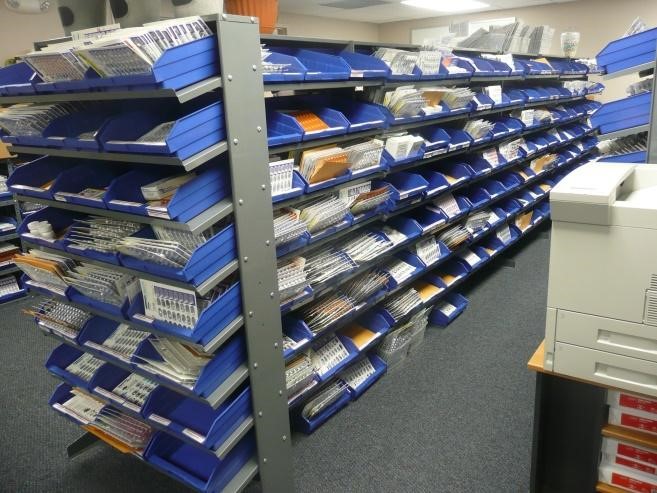A charitable pharmacy program serves un-insured or underserved patients with low-income. The charitable program may be a pharmacy’s exclusive focus, or it may be incorporated into pharmacy with a broader business plan with many agendas. Pharmacies dispensing solely to patients under the charity program will be referred to as “Charity-only” pharmacies, whereas pharmacies dispensing to both insured and un-insured patients and engaging in other for-profit activities in addition to the charity program will be referred to as “Mixed-Model” pharmacies. A charitable pharmacy program may be successfully operationalized in many different types of pharmacy models and settings with a stipulation that each must segregate charitable medications from the for-profit medications.
Some charitable pharmacies are independently funded, stand-alone, not fully supported by a hospital or health system. All charitable pharmacy models can be open-door: serving eligible patients from the entire community or state. Clinic or hospital models may or may not limit their patients to those referred from a specific source. Most models limit the geographical population they serve (city, county, state, etc.) due to limited resources.
A charitable pharmacy program serves un-insured or underserved patients with low-income. The charitable program may be a pharmacy’s exclusive focus, or it may be incorporated into pharmacy with a broader business plan with many agendas. Pharmacies dispensing solely to patients under the charity program will be referred to as “Charity-only” pharmacies, whereas pharmacies dispensing to both insured and un-insured patients and engaging in other for-profit activities in addition to the charity program will be referred to as “Mixed-Model” pharmacies. A charitable pharmacy program may be successfully operationalized in many different types of pharmacy models and settings with a stipulation that each must segregate charitable medications from the for-profit medications.
Some charitable pharmacies are independently funded, stand-alone, not fully supported by a hospital or health system. All charitable pharmacy models can be open-door: serving eligible patients from the entire community or state. Clinic or hospital models may or may not limit their patients to those referred from a specific source. Most models limit the geographical population they serve (city, county, state, etc.) due to limited resources.
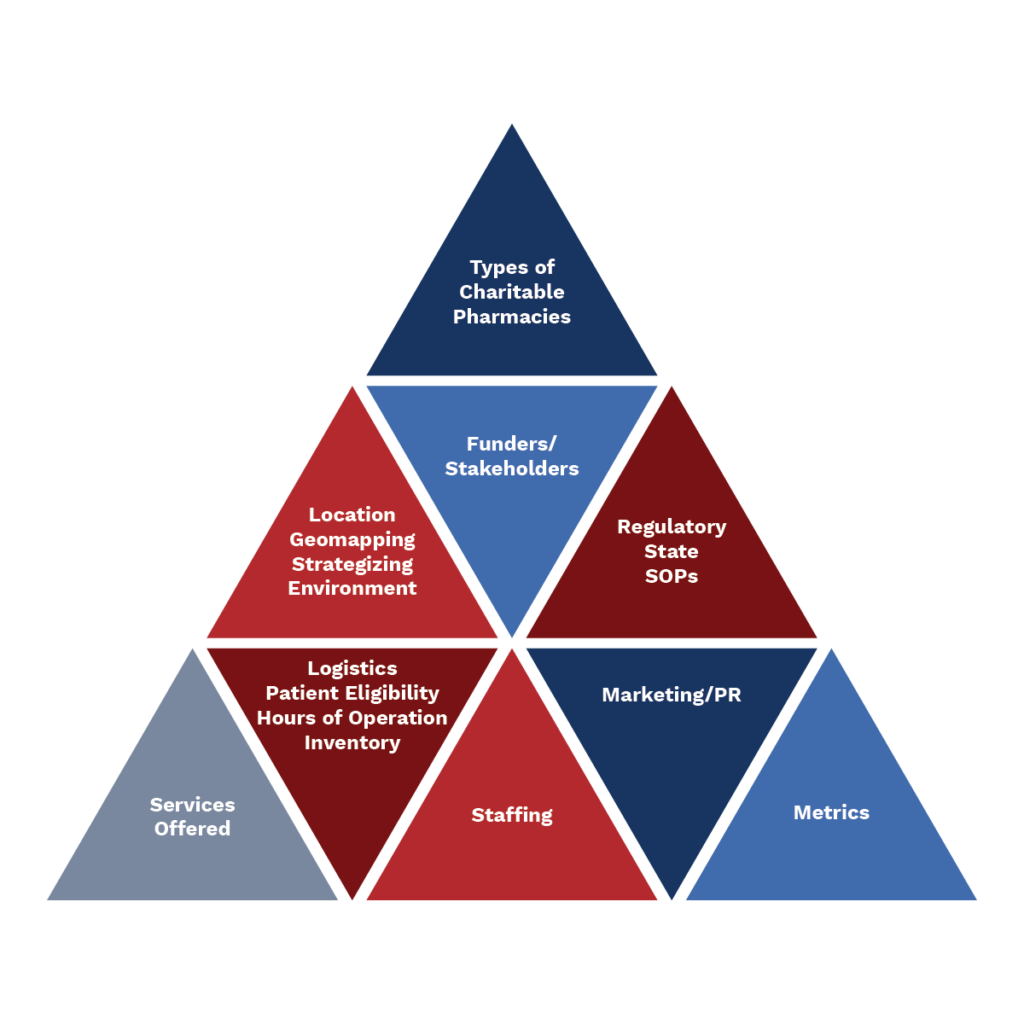
The type of charitable pharmacy influences all levels of operation. The following sections will illustrate how the various models function.
| Model | Funding | Patients | Open-door |
| Charity-Only | Can be stand alone or not | Dispense solely to eligible charity patients;
May limit to geographical area |
May be open-door or limit to specific referral source |
| Mixed-Model | Can be stand alone or not | Serves both insured & uninsured patients;
May limit to geographical area; Engages in other for-profit activities in addition to the charitable pharmacy |
May be open- door or limit to specific referral source |
Charitable pharmacies can take many forms and be operated in a physical location or mail order, at a hospital campus, or out of a collaborative practice site (health department, thrift shop, etc.) The following are examples of existing charitable pharmacies serving the uninsured of their area in a variety of models.
Charity Only |
Mail-Order Charity Only |
Collaboration Mixed Model |
Clinic-Based Mixed Model |
Hospital-Based Mixed Model |
|---|---|---|---|---|
| Standalone pharmacy providing services for uninsured patients
Central fill pharmacy |
Comprehensive drug donation, re-dispensing and disposal programs | Charity pharmacy that serves both insured and uninsured | Can be located on a hospital campus or inside a primary care clinic location | Charity pharmacy and retail pharmacy on hospital campus |
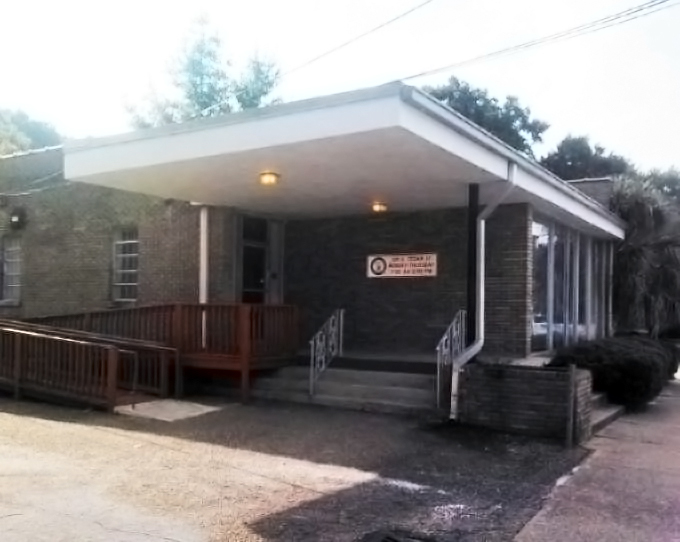
Ozanam Charitable Pharmacy
Shearie Archer, Executive Director
The Ozanam Charitable Pharmacy, Inc. located in Mobile, Alabama was founded as a non-profit 501 (c) (3) organization in 1997 and began serving low-income residents of Mobile County in 1998. The primary goal was to decrease inappropriate ED visits and decrease hospitalizations of seniors 60 years-old plus. Emphasis was to keep in stock maintenance medications- blood pressure, heart, anti-seizure, etc. A policy was established that no controlled substances (narcotics) would be stocked. Initially, medications were to be obtained as samples donated by area physicians and as purchased generics. In the early stages, pharmacists were volunteers and the pharmacy filled prescriptions for roughly 400 patients per month in Mobile County.
Caseworkers with Catholic Social Services certified individuals as being eligible for pharmacy services. A guideline examined patient sources of income and necessary expenses. Those left with little or no money would be eligible. In subsequent years, service has been extended to residents of Baldwin and Escambia (Alabama) Counties. In the aftermath of Hurricanes Katrina and Rita the pharmacy has filled prescriptions for evacuees of the disaster staying in our community.
In 2001 the growing partnership with Area Agency on Aging and the establishment of a partnership with the Escambia County Health Department led to the extension of pharmacy services to patients in Escambia and Baldwin Counties. As a result, the pharmacy’s patient base in Escambia County has grown from 150 per month to over 400 per month. Grants to Ozanam Pharmacy include Community Block Grant funding from the City and County of Mobile, South Alabama Regional Planning Area Agency on Aging, Catholic Charities, United Way of South Alabama, local, national foundations, a primary fundraiser, and direct mail.
As funding increased, a full-time pharmacist was hired to handle filling more than 1,000 new prescriptions per month. In subsequent years grants from McMillan Trust and Neal Trust in Escambia County allowed the addition of a part-time pharmacist and the purchase of more generic medications. A staff position was created to assist low-income persons enrollment into manufacturer Patient Assistance Programs (PAPs). This program helps ensure patients a consistent supply of brand-name medications challenging to keep in stock via physician samples. In many cases, these medications come directly to the pharmacy and patients are able to pick them up along with their other prescriptions.
Ozanam became a teaching site for Auburn University Harrison School of Pharmacy with fourth year pharmacy students performing their 5 weeks of rotations at our pharmacy. Due to health literacy issues, our patients needed more disease state education. Students provide patient education, including targeted Medication Therapy Management, device utilization, and motivational techniques. The Mobile County School Commission provides the pharmacy with 4000 square feet of space to accommodate the extensive counseling.
Initial marketing included a partnership with local Medical Alliance Group, Physician Groups (primarily for samples), clinics, local churches, health fairs, and other organizations serving the uninsured population. Today, we use the local print and broadcast media, web site, e-newsletters, publish printed newsletter, direct mail and social media to provide information to our patients and health care professionals.
As of 2017, Ozanam pharmacy fills prescriptions for as many as 1,671 persons each month. In fiscal year 2017, 28,000 prescriptions were filled with a retail value of roughly $2,000.000 on a budget of roughly $400,000. Funding provided for seven full-time and part-time staff and 22 hours of operation, open 4 days weekly.
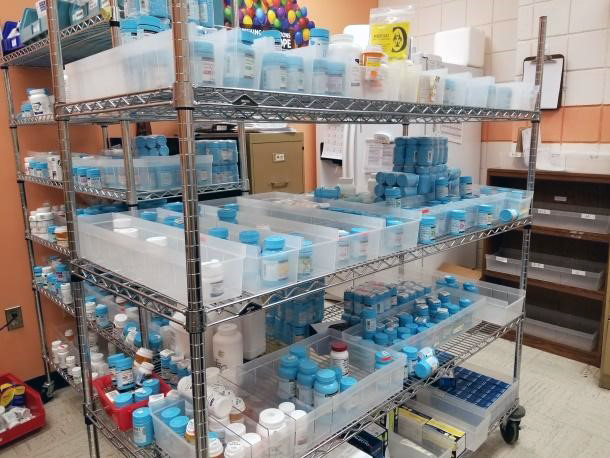
HOPE Dispensary of Greater Bridgeport
Christine Toni, BS Pharm, Founding Coordinator
Angela Faulhaber, PharmD, Current Coordinator
HOPE Dispensary of Greater Bridgeport was started as a collaboration between health care agencies within the city (Primary Care Action Group (PCAG)) to address recurrent ED visits and hospital admissions by low income, uninsured patients at two hospitals. Medication access for this population was determined as a primary factor. A charitable pharmacy, offering medication access, education, and referring patients to primary care providers would offer the city’s uninsured a cost-effective health care option.
Initial funders provided a startup grant (2-year Ascension Health), location and utilities (City of Bridgeport Department of Health building), and fixtures and salary mechanism (St. Vincent’s Medical Center). Community groups (rotary, water company, and others) provided funding for software and vendor memberships. Bridgeport Hospital and five area clinics acted as referral sources for patients to and from HOPE. The initial site was chosen to meet state pharmacy regulations and offer familiarity and convenience for patients (on a local bus route with other social services provided in the building). Funding provided for 21 hours of operation, open 3 days weekly. Initial staffing was one pharmacist and one pharmacy assistant. More funding became available as metrics demonstrated the positive impact of the pharmacy on the health of the community. As work volume both for prescriptions and manufacturer patient assistance programs increased, a pharmacy technician was added to the staff.
It was determined for pharmacy safety there would be no fees for patients (therefore no money) and no control medications. A limited formulary provided the maximum use of resources for most of the disease states seen in this population. The initial formulary list was distributed to area providers, utilizing therapeutic interchange as needed with provider consent. With the institution of Collaborative Practice in Connecticut, a collaborative practice agreement for therapeutic interchange was obtained with many physicians, allowing dispensing of prescriptions upon initial visit.
Initial marketing included presentations at physician groups, clinics, local churches, health fairs, and other organizations serving the uninsured population. Though physicians were important, APRNs, PAs, social workers, case managers, and clinic liaisons provided the most patient referrals and constructive feedback. Fliers in multiple languages with a map and hours of operation were made available at all clinics, food pantries and grocery stores. Another referral source became local pharmacies that had patients who could not afford their medication.
As the primary goal of the PCAG was to decrease inappropriate ED visits and decrease hospitalizations, patient education became as important a service as medication access. Greater than 50% of the patients speak a language other than English so having staff and technology to interpret was essential. Providers soon depended on the pharmacy to compliment what they were not always staffed to offer for patient education, including targeted Medication Therapy Management, device utilization, and motivational techniques. The pharmacy became more of an ambulatory care site, with the city donating another space for patient counseling.
A collaboration with local universities developed as the pharmacy workload increased. Pharmacy students volunteered for service hours as well as IPPE, APPE, and Pharmacy Resident rotations. A program for Experiential Service Learning for nursing, foreign language and social worker students was developed, providing students professional encounters with this population and donating volumes of chart maintenance for the pharmacy.
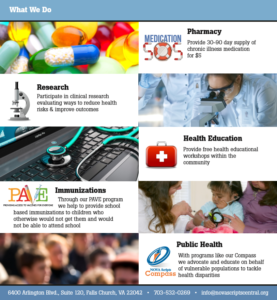
Nova Scripts Central, Inc.
Donney John, Pharm D. Executive Director
6400 Arlington Blvd, Falls Church, VA 22042
- Established in 2007
- NOVA ScriptsCentral, Inc. (NSC) is a 501 (c)3 nonprofit collaborative pharmacy.
- Mission: Our mission is to provide quality integrated pharmaceutical care and medication access to low-income uninsured children and adults living in Northern Virginia.
- Vision: Improve the health of the community by empowering patients to take charge of their health and eliminating barriers to care.
Special services:
Comprehensive Medication Management
Educate before you medicate
Nova Scripts Compass
Medication SOS
Wyoming Medication Donation Program
Natasha Gallizzi, Pharm.D.
Program Manager
The Wyoming Medication Donation Program, a program of the Wyoming Department of Health, is a state-wide mail order charitable pharmacy. The program is a comprehensive drug donation, re-dispensing, and disposal program that improves prescription access for Wyoming’s low-income patients, up to 200% Federal Poverty Level, who lack adequate prescription coverage while reducing medication waste.
Wyoming has a state-wide donation network that collects sealed, in-date medication donations, excluding refrigerated medications and controlled substances, which are shipped to the central location for processing. After processing, acceptable medications are made available to fill prescriptions for eligible patients throughout Wyoming. Unacceptable medications are disposed of via incineration (See: Medication Destruction). To fill gaps in the donated inventory, additional medications are acquired through the Dispensary of Hope membership.
The Wyoming Medication Donation Program (WMDP) started as a pilot program in Laramie County with a typical retail pharmacy model under a non-profit agency. After showing positive results, the pilot pharmacy continued (under the non-profit) and the statewide mail-order pharmacy branched off under the Wyoming Department of Health (WDH) in a new facility with a new pharmacy license. Both pharmacies are still flourishing.
As of 2017, WMDP serves approximately 3,000 patients annually. More than 700 of these patients are served via mail only, mailing over 1,000 prescriptions per month. The remaining patients are serviced at our Dispensing Sites. The Dispensing Sites are Wyoming clinics or pharmacies registered with WMDP to order donated medications to maintain at their site. Each site is responsible for verifying patient eligibility and dispensing the medication according to prescription. The sites send quarterly reports to the WMDP on the number of patients served and number of prescriptions filled. There are currently six active Dispensing Sites, including two free clinics, a homeless clinic, and the pilot program pharmacy mentioned above. State-wide data is compiled and shared with WDH administration, legislators, and supporters.
Staffing
The WMDP pharmacy is open 30 hours per week. Staffing consists of one pharmacist/program manager (0.75FTE), one fill-in pharmacist (0.25FTE), and three pharmacy technicians (2.25 FTE). Several volunteers help process donations and disposal. Volunteer hours average 35 hours per month. The program was recently approved for expansion that will provide more space and staffing, as well as adding a service to help patients apply for manufacturer prescription assistance programs. This is especially needed for insulin and inhalers.
The Wyoming Department of Health, Division of Healthcare Financing, and Pharmacy Services serves as a rotation site for pharmacy students from the University of Wyoming. The students spend one week of their rotation with WMDP. In the summer, pharmacy student interns volunteer.
Marketing
Local collaborations are very important for success. In the beginning, education of local providers, the hospital, and safety-net services were the most impactful. The program has focused a lot of education and marketing to state networks to spread the word about what we do and increase utilization of the program. Some examples are the Wyoming Hospital Association, Wyoming Primary Care Association, Prevention Management Organization, hospitals, PCMH’s, Wyoming Pharmacy Association, Public Health, Nursing Home Association, and various state health advisory groups.
Collaborating and coordinating messages with existing agencies and programs with statewide contacts has been a key to the program’s success. Venues include our website, presentations, e-newsletters, vendor booths at conferences, involvement in task forces that have similar goals. For example, the pharmacist is on the Wyoming Prescription Drug Abuse Stakeholders group, making many good contacts during the drug disposal discussions.
Patient Services
Caseworkers from 45 hospitals, clinics, and mental health centers around the state refer patients to the pharmacy. Enrollment is done via fax or standard mail. Online enrollment is not used due to unknown security of the sender’s internet connection for private parties (See: Appendices\Eligibility\WMDP_Application_Packet_02_27_2017.pdf for example of enrollment forms).
To assist communication via mail, we have several different colored notes that we send along with the patient’s prescription to notify them about issues. Notifications include:
- 90-day supply dispensed
- Dose substitution (e.g. lisinopril 20mg 1 orally daily to lisinopril 10mg 2 orally daily)
- Notification that the requested medication is not in stock and we put them on the waitlist
- Additional eligibility information required
- Notice of eligibility renewal needed (sent along with application for renewal)
- Notice to request refills together so we don’t have to ship so many packages per month for the same person
- Notice of PAP paperwork (e.g. Eliquis, insulins, etc.)
Notes are color-coded, making it easier to find the correct note to send. The prescription vial and notes are placed inside a plastic bag then placed inside the mailing envelope. Patients seem to notice the notes bagged with the prescription separately better than when the notes were included with all of the other prescription paperwork just inside the mailing envelope.
Documentation is placed in the patient profile of the pharmacy software system regarding date eligibility expires, requests for additional information, and other care notes. All notes are dated to facilitate follow-up communication with patients and/or providers. Staff checks the patient profile each time the patient is on the phone to verify any changes in address or phone number to save on returned mail and keep all files as current as possible.
Mail Order Process
Prescriptions are sent to patients free of charge via certified mail. A signature is required, and packages can be tracked. During the holidays we get a lot of mail status questions due to mail delays. Bigger boxes are typically sent via United Parcel Service (UPS). In very rural towns, UPS has provided the most reliable carrier. Most packages take two days or longer to be delivered. In December and when there are federal holidays more delivery time is allowed. Refills are sent up to ten calendar days prior to due date.
Special equipment is utilized in a mail-order practice, including a postage meter, certified mail stickers, and a contract with a courier for incoming donations. Ideally, the pharmacy has a designated shipping area, both for arrival of donations and for outgoing prescriptions. In the shipping area are kept mailing envelopes, package tape, boxes for shipping, and other mailing supplies. Meds for disposal are segregated to their own area as well.
Metrics
In addition to metrics other charitable pharmacies keep, we track the number of cities served. A reporting feature in the software tracks by zip code or city name. This was especially helpful as we were growing our state-wide program to determine if the program was achieving a state-wide reach.
The medication dollar value dispensed to each county as well as the dollar value donated from each county is tracked. State leadership has been interested to see if the incoming donation value correlates with outgoing in each county. Wyoming has 23 counties. See How Much Did We Do or How Many?. We are researching other software options to recalculate more information into county metrics.
Another metric helpful for gaining support has been breaking down the number of prescriptions by therapeutic class, especially to see how many mental health medications are dispensed.
SafeNetRx Charitable Pharmacy
Jon Michael Rosmann, CEO
11100 Aurora Ave, Bldg 13
Urbandale, IA 50322
Saint Thomas Health (STH) operates several different types of charitable pharmacy models. Two are located on metropolitan hospital campuses, while two others are located inside of STH primary care clinics. All models except one dispense medications to charity patients of either the hospital and/or clinic and STH associates. These pharmacies have the ability to process commercial insurance and Tennessee Medicaid (Tenncare) as well. 340B qualifying locations will also layer this program into existing charitable pharmacy models to offer comprehensive service to its patients. Both a charitable pharmacy model and 340B program can work in tandem to provide medication access to patients experiencing affordability issues. Of note, one pharmacy does not dispense to associates due to a non-STH owned pharmacy already contracted to provide this service prior to the introduction of the charitable pharmacy to this campus.
Saint Thomas Health is a family of Tennessee hospitals and physician practices united by a single mission: to provide spiritually centered, holistic care that sustains and improves the health of the communities we serve. As a part of Ascension Health, the largest not-for-profit health care system in the United States, they are committed to healing and dedicated to service, especially to persons who are poor or needy, reflecting the spiritual core of our mission, vision, and values.
The Clinic Model (Mixed Model) is the preferred model for Saint Thomas Health now that campus-based charity models have been established.
- Best suited to capture indigent/sliding scale clinic patients
- Convenient to patients already onsite for appointment decreasing transportation issues
- Onsite support for providers with patients expressing affordability issues, steer prescribers to charity formulary
- Market to associates as an in-house pharmacy to capture revenue and also save health system dollars if self-insured
- Capture retail business from the clinic to offset charity operational costs
- Assist with hospital discharge prescriptions if close proximity to a hospital campus without an onsite outpatient/charitable pharmacy
- Is there space in clinic for a pharmacy?
- Is there a common lobby that can be shared decreasing square footage needs of pharmacy? Patients should be able to access pharmacy even if clinic is closed if hours differ.
Hickman Charitable Pharmacy
Ashley Bennett, Pharm D
Saint Thomas Health Outpatient Pharmacy Supervisor
Centerville, TN
- Part of a $1 million-dollar Clinic expansion that included behavioral health servicesand a charitable pharmacy
- Clinic model chosen as no space available on Hospital proper, Clinic shares a parking lot with Hospital
- 340Breinvestment narrative helped make this happen (25 bed critical access hospital)
- Needs assessment identified behavioral health/medication access as a focus area
- Hickman County has one of the highest suicide rate in the state
- Behavioral Health needs include medication access
- Just started filling employee RX in February 2017
Hickman County Demographics
- Rural community
- Population approximately 25,000
- Median household income $31,013
- Persons below poverty level 16.3%
Hickman County (Community Health Needs Assessment) See Local Factors for Community Charitable Pharmacy Implementation
- Prioritized Need #3: Access to Care/ Care Coordination
- Goal: Improve access to comprehensive, quality healthcare servicesthrough increasing availability and affordability of care while advocating for increased health insurance
Initial Marketing plan – See Marketing Where to start.
- STH Campus providers
- Saint Thomas HealthClinic staff
- Hospitalists
- Emergency Department
- Care Management
- Behavioral Health providers
- Community resource counselor
- Flyer distribution
- Local medical & dentist practices
- Local Health department
- Local Churches
- Helping Hands
- Churches
- Saint Thomas HealthAt Home Medical Mission
- 211nationwide local resource listing
- Community Safety Net meeting
- Community newspaper ad & local radio spot
- Open House with Blessing/Ribbon Cutting Ceremony
Saint Louise Pharmacy
Rutherford County, TN
Rutherford County, Tennessee, population 308,251 in 2016 with 10.5% uninsured. Of note, Community Commons 45% uninsured rate for Hispanic and Latinos in the area (2015). Also, 24% of adults 19-25 years old are without health coverage.
- Located in the Saint Louise Clinic in Rutherford County, a clinic that serves patients of all ages which includes pediatrics, obstetrics, adult primary care, and geriatrics.
- Partners with medical residents and pharmacy students to provide learning opportunities
- Pharmacy dispenses to Saint Thomas Health associates and charity patients from Saint Louise Clinic and community at large
- Saint Thomas Healthfirst charitable pharmacy site, operating 10+ years
- 1 pharmacist, 2 technicians
- Fiscal Year 2017, Pharmacy dispensed over 25,000 prescriptions to 6,149 patients qualifying for charity care.
Davidson County, TN
Population 684,410 (2016)
14% of persons without health insurance, under 65 years
- Best suited to capture discharge patients and most convenient to eliminate an extra stop post-discharge
- Partner with Care Management to identify patients with medication access issues prior to discharge
- Provide 30 day fills for discharged patients to prevent readmission
- Best aligned with 340Bcovered entities to fit into the narrative of 340B savings reinvestment
- Marketed to all potential patients: employees, discharged injured and uninsured patients, Meds to Bed program, ED patients, patients of hospital specialty clinics such as transplant, full retail capability to service patients visiting practices in the Medical Office Buildings, Same day surgery sites, and visitors staying with patients in the hospital.
- Is there space on campus with convenient access?
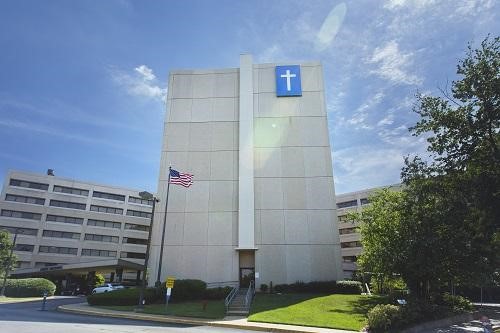
Plaza Pharmacy- Saint Thomas West Hospital campus
- Plaza Pharmacy is a full-service retail pharmacy opened to the public
- Metropolitan hospital campus
- In house pharmacy for hospital associates
- Charitable pharmacy
- Transplant specialty meds
- Located in the Plaza Medical office building adjacent to food court connected to the hospital
- 3 pharmacists, 6 technicians
- Retail Pharmacy 30+ years, Charity program 10 years
- During Fiscal Year 17, Plaza served over 6,000 charity patients by dispensing approximately 24, 000 prescriptions
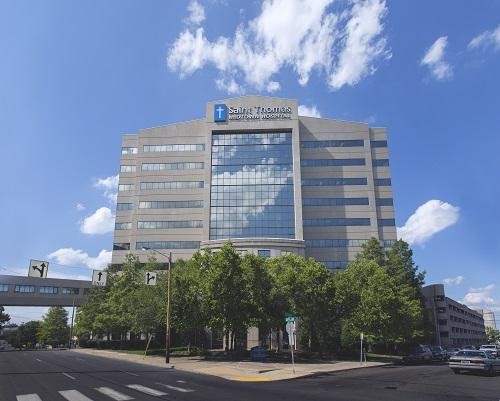
Saint Vincent Pharmacy – Saint Thomas Midtown Hospital campus
- Located on first floor by registration and Emergency Department
- Serves Charity patients only since October 2014
- does not dispense to associates due to a non-STH owned pharmacy already contracted to provide this service prior to the introduction of the charitable pharmacy to this campus
- Metropolitan hospital campus in close proximity to downtown Nashville and homeless population
- Referrals from hospital discharges, homeless shelter, other safety net providers in area
- 1 pharmacist, 2 technicians
- Saint Vincent served 6,149 charity patients during the hospital’s last fiscal year which represented 25,327 prescriptions.
Get access to the full playbook
Get instant access to the full playbook, with more than 150 pages of valuable guidance, case studies and resources to help you develop your charitable pharmacy.


